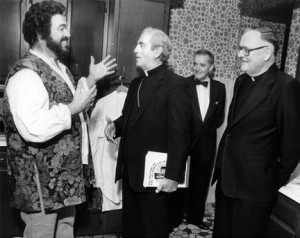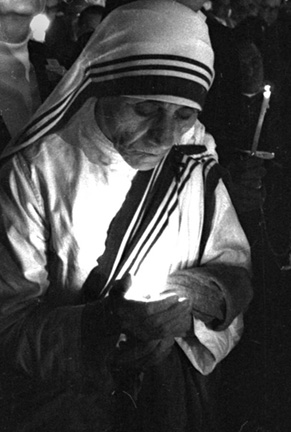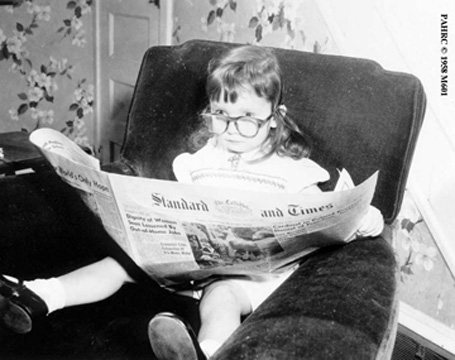As a volunteer at PAHRC, I’ve been most excited about beginning the process of reformatting the Robert and Theresa Halvey Photograph Collection. Currently in the inventory cataloging stages, the ultimate goal is to digitize the entire collection and make the images available online. For over sixty years, Robert Halvey served as a freelance photographer for the Catholic Standard and Times, often as a volunteer. His career as a photographer began in the 1930’s, taking photos for the Roman Catholic High School newspaper and neighborhood newspaper The Kensington Critic. He was then a U.S. Army photographer during World War II, for which he received a Legion of Merit, and later a staff photographer for Pennsylvania Hospital.


Luciano Pavarotti and the late Cardinal Bevilacqua, 1989
The collection currently consists of 39 archival boxes filled with envelopes of negatives. The various types of negatives in the collection demonstrate how the photographic process evolved throughout Halvey’s career. With the exception of several early glass negatives, the collection contains primarily cellulose acetate film, or safety film. These negatives are in 4x5 single sheets and 3x5 35mm or 7.5x1.5 70mm strips. Safety film is named for its inflammability, but is nonetheless unstable and subject to deterioration. This makes reformatting the images crucial to their preservation. The first step in preparing the photographic negatives for digitization was getting an estimate of the number of images, or negatives, in the collection. Due to the large size of the collection, another volunteer, Gillian Grady, and I used sampling to accomplish this task. After counting the number of envelopes in each box, we counted the number of negatives in a sample population of envelopes, as each envelope contains a sometimes vastly different number of negatives. Based on the results, we can reasonably estimate that the collection has approximately 350,000 negatives. Our next step is to begin cataloging the images using Past Perfect. Stay tuned for more blog posts about this project! Sources: Baldwin, Lou. "Today's Picture - Tomorrow's History." The Catholic Standard and Times [Philadelphia] 5 Feb. 2004: 3, 29. Valverde, Maria F. Photographic Negatives: Nature and Evolution of Processes. Rochester: Image Permanence Institute, 2004.



